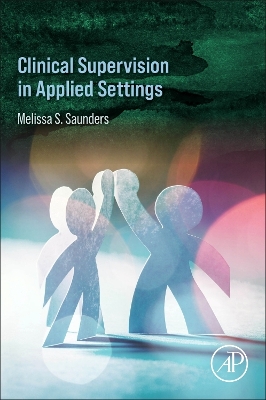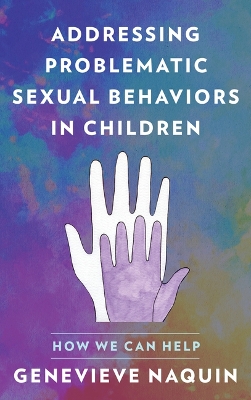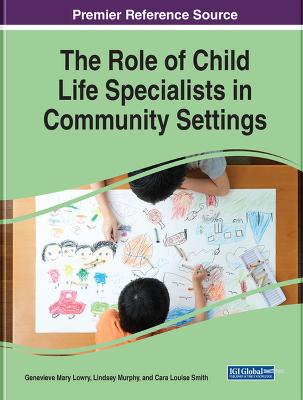Addressing Problematic Sexual Behaviors in Children
 portes grátis
portes grátis
Addressing Problematic Sexual Behaviors in Children
How We Can Help
Naquin, Genevieve
Rowman & Littlefield
12/2024
224
Mole
9781538197905
Pré-lançamento - envio 15 a 20 dias após a sua edição
Descrição não disponível.
Preface
Introduction to the Research
Some Things to Note Before We Get Started
Definitions at a Glance
Development
Treatment Steps
Part I: Curriculum
Chapter 1: Building Rapport
Building Trust
Chapter 2: The Foundation of Treatment: Safety Planning, Boundaries, and Types of Touch
Basics of a Safety Plan
The Safety Plan
Boundaries
Types of Touch
Chapter 3: Body Awareness
Emotional Recognition and Regulation
Building Coping Skills and Interventions
Let's Talk About Body Parts
Chapter 4: Client History
Gathering Client History
Trouble Thoughts
Chapter 5: Ownership
Accountability
Chapter 6: Healthy Relationships and Appropriate Sexuality
Components of a Healthy Relationship
Components of Consent
Helpful Tools to Teach C.E.R.T.S and F.R.I.E.S
Safety in Relationships
Psychoeducation Related to Pornography
Chapter 7: Empathy and Awareness
Intent vs. Impact and Empathy vs. Sympathy
Psychoeducation for Caregivers Regarding Empathy
Victim Awareness
Curriculum Chapter 8: Future Safety and Finishing Strong
Safe Play Plan
Treatment Review
Part II: ...
Chapter 9: Multi-System Involvement
Let's Talk About School
Involvement in Extracurriculars
Functioning within the Home
Community Partners
Chapter 10: Common Characteristics, Barriers, and Challenges That Come Up When Working with This Population
Common Characteristics, Barriers, and Issues Seen in Children with Problematic Sexual Behaviors
Common Challenges That Come Up When Working with the Families of Children with Problematic Sexual Behaviors
Common Struggles and Issues Experienced When Working within Larger Systems While Treating Problematic Sexual Behaviors
Conclusion
Chapter 11: Furthering the Field
Lack of Research
Assessments
Appendix: Activity Worksheets and Examples
References
Index
About the Author
Introduction to the Research
Some Things to Note Before We Get Started
Definitions at a Glance
Development
Treatment Steps
Part I: Curriculum
Chapter 1: Building Rapport
Building Trust
Chapter 2: The Foundation of Treatment: Safety Planning, Boundaries, and Types of Touch
Basics of a Safety Plan
The Safety Plan
Boundaries
Types of Touch
Chapter 3: Body Awareness
Emotional Recognition and Regulation
Building Coping Skills and Interventions
Let's Talk About Body Parts
Chapter 4: Client History
Gathering Client History
Trouble Thoughts
Chapter 5: Ownership
Accountability
Chapter 6: Healthy Relationships and Appropriate Sexuality
Components of a Healthy Relationship
Components of Consent
Helpful Tools to Teach C.E.R.T.S and F.R.I.E.S
Safety in Relationships
Psychoeducation Related to Pornography
Chapter 7: Empathy and Awareness
Intent vs. Impact and Empathy vs. Sympathy
Psychoeducation for Caregivers Regarding Empathy
Victim Awareness
Curriculum Chapter 8: Future Safety and Finishing Strong
Safe Play Plan
Treatment Review
Part II: ...
Chapter 9: Multi-System Involvement
Let's Talk About School
Involvement in Extracurriculars
Functioning within the Home
Community Partners
Chapter 10: Common Characteristics, Barriers, and Challenges That Come Up When Working with This Population
Common Characteristics, Barriers, and Issues Seen in Children with Problematic Sexual Behaviors
Common Challenges That Come Up When Working with the Families of Children with Problematic Sexual Behaviors
Common Struggles and Issues Experienced When Working within Larger Systems While Treating Problematic Sexual Behaviors
Conclusion
Chapter 11: Furthering the Field
Lack of Research
Assessments
Appendix: Activity Worksheets and Examples
References
Index
About the Author
Este título pertence ao(s) assunto(s) indicados(s). Para ver outros títulos clique no assunto desejado.
adverse childhood experiences;child psychopathology;child sexual abuse;child sexuality;childhood development;children who abuse;deviant behavior;family therapy;Harmful sexual behavior;problematic sexual behaviors;PSB;sex education;sex offense treatment;sexual abuse;sexual acting out;treating sexual abuse;treating sexual trauma
Preface
Introduction to the Research
Some Things to Note Before We Get Started
Definitions at a Glance
Development
Treatment Steps
Part I: Curriculum
Chapter 1: Building Rapport
Building Trust
Chapter 2: The Foundation of Treatment: Safety Planning, Boundaries, and Types of Touch
Basics of a Safety Plan
The Safety Plan
Boundaries
Types of Touch
Chapter 3: Body Awareness
Emotional Recognition and Regulation
Building Coping Skills and Interventions
Let's Talk About Body Parts
Chapter 4: Client History
Gathering Client History
Trouble Thoughts
Chapter 5: Ownership
Accountability
Chapter 6: Healthy Relationships and Appropriate Sexuality
Components of a Healthy Relationship
Components of Consent
Helpful Tools to Teach C.E.R.T.S and F.R.I.E.S
Safety in Relationships
Psychoeducation Related to Pornography
Chapter 7: Empathy and Awareness
Intent vs. Impact and Empathy vs. Sympathy
Psychoeducation for Caregivers Regarding Empathy
Victim Awareness
Curriculum Chapter 8: Future Safety and Finishing Strong
Safe Play Plan
Treatment Review
Part II: ...
Chapter 9: Multi-System Involvement
Let's Talk About School
Involvement in Extracurriculars
Functioning within the Home
Community Partners
Chapter 10: Common Characteristics, Barriers, and Challenges That Come Up When Working with This Population
Common Characteristics, Barriers, and Issues Seen in Children with Problematic Sexual Behaviors
Common Challenges That Come Up When Working with the Families of Children with Problematic Sexual Behaviors
Common Struggles and Issues Experienced When Working within Larger Systems While Treating Problematic Sexual Behaviors
Conclusion
Chapter 11: Furthering the Field
Lack of Research
Assessments
Appendix: Activity Worksheets and Examples
References
Index
About the Author
Introduction to the Research
Some Things to Note Before We Get Started
Definitions at a Glance
Development
Treatment Steps
Part I: Curriculum
Chapter 1: Building Rapport
Building Trust
Chapter 2: The Foundation of Treatment: Safety Planning, Boundaries, and Types of Touch
Basics of a Safety Plan
The Safety Plan
Boundaries
Types of Touch
Chapter 3: Body Awareness
Emotional Recognition and Regulation
Building Coping Skills and Interventions
Let's Talk About Body Parts
Chapter 4: Client History
Gathering Client History
Trouble Thoughts
Chapter 5: Ownership
Accountability
Chapter 6: Healthy Relationships and Appropriate Sexuality
Components of a Healthy Relationship
Components of Consent
Helpful Tools to Teach C.E.R.T.S and F.R.I.E.S
Safety in Relationships
Psychoeducation Related to Pornography
Chapter 7: Empathy and Awareness
Intent vs. Impact and Empathy vs. Sympathy
Psychoeducation for Caregivers Regarding Empathy
Victim Awareness
Curriculum Chapter 8: Future Safety and Finishing Strong
Safe Play Plan
Treatment Review
Part II: ...
Chapter 9: Multi-System Involvement
Let's Talk About School
Involvement in Extracurriculars
Functioning within the Home
Community Partners
Chapter 10: Common Characteristics, Barriers, and Challenges That Come Up When Working with This Population
Common Characteristics, Barriers, and Issues Seen in Children with Problematic Sexual Behaviors
Common Challenges That Come Up When Working with the Families of Children with Problematic Sexual Behaviors
Common Struggles and Issues Experienced When Working within Larger Systems While Treating Problematic Sexual Behaviors
Conclusion
Chapter 11: Furthering the Field
Lack of Research
Assessments
Appendix: Activity Worksheets and Examples
References
Index
About the Author
Este título pertence ao(s) assunto(s) indicados(s). Para ver outros títulos clique no assunto desejado.
adverse childhood experiences;child psychopathology;child sexual abuse;child sexuality;childhood development;children who abuse;deviant behavior;family therapy;Harmful sexual behavior;problematic sexual behaviors;PSB;sex education;sex offense treatment;sexual abuse;sexual acting out;treating sexual abuse;treating sexual trauma







